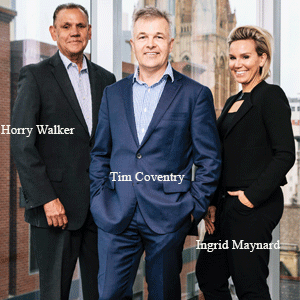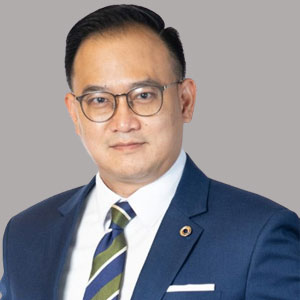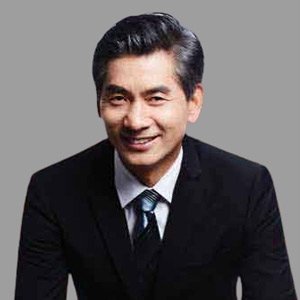THANK YOU FOR SUBSCRIBING
Editor's Pick (1 - 4 of 8)

Leading Enterprise Agile Transformation Series - Chapter 2: From Agile to Enterprise Agility
Parikshit Basrur, Director, Enterprise Agility, Deloitte


Parikshit Basrur, Director, Enterprise Agility, Deloitte
Reflection
Now, let us rewind the experience and reflect. “Are my business problems the same as everyone else? No, they are unique. So then, why is my solution just like everyone else? Am I in a position to create a new way of doing things? Why don’t I find innovative solutions for my problems? How do I empower myself today? How do I change the current state short-term, quarter-by-quarter, cost-driven bottom line thinking? And finally, how do I lead in this space of fear, uncertainty, doubt and constant change. I believe that before we can create new ways of working, we need to change our way of thinking, creatively destroying our old world view. Only then, can you create a new one. So, let us get a few fundamentals right starting with first reframing what this term “agile” really means.
#ReframeAgile
There is no such thing as an agile transformation or a digital transformation. It is only ever about an organizational transformation. Agile, digital, etc. are enablers. It’s about people, not processes and tools. It is organic, not inorganic. It’s about the soft stuff, not the hard stuff. It is internal, not external. And finally, it is about you. Not your customer. The customer does not care if you are undertaking an enterprise agile transformation. Make it about you, your people and your culture. All the fuzzy bits that will make your organization an amazing place to work. So if you think you are doing it for the right reasons to save costs and profitability, my advice for you – donot do it. What then is “agile”? How do you create an “agile” organization? And what does an “agile” organization look like?
Core Competence
Core competence is a concept introduced by C.K. Prahalad and G. Hamel in their seminal paper “The core competence of the corporation” in 1990. The core competence of an organization is defined as the collective learning in the organization, especially the capacity to coordinate diverse production skills and integrate streams of technologies. Organizing around core competencies requires a radical change in corporate organization”. I believe that “Agile” in its true form “Enterprise Agility” is the new-age core competence that organizations must build today.
The Shift from Agile to Enterprise Agility
How do you create enterprise agility within an organization? As leaders, you are all facing this challenge. Most of you are internally wired to old-age management thinking driven by Frederick Winslow Taylor’s school of scientific management. Your philosophy is driven by efficiency, throughput, performance, standard processes and control. Concepts which worked well for you in the last century will fail you in the future. The world of tomorrow is unlike the world of today. Therefore, you need to change your management style and philosophy to be successful.
Enterprise agility, the ability to respond to market changes faster than they occur is no longer a competitive advantage. It is the new normal. And you, as a leader, need to change your internal wiring. So how do you stop being you? And step into a space of creating an organization that does not have multiple layers of management and does not have hard performance metrics. A learning organization where employees have a long term tenure. So they do not have to worry about securing income, learn and build an organization that learns from within. Learning is the first step towards innovation. Care for your employees, love them and eliminate short-term quarter-by-quarter performance measures. Start thinking about your people and stop thinking about your shareholders as happy employees will create happy customers. You need to stay in the long game, think of decades ahead. What will be your legacy? Would you be known as someone who led cost-leadership and let go of your people or someone enabled them learn, change and undergo a personal transformation for leading the organization? The choice is yours.
Conclusion
Over the last 15 years, I have led multiple enterprise organizational transformations as a management consultant and an executive. My life’s journey has taught me that you need to first define the purpose. “What does agile mean for me? For my people? For my organization?” Then build the strategy. Think long-term, 2-3-5-10 years ahead. Create the roadmap for the future, own your destiny, stay on for the long game, build the capability, fight the good fight to attract and retain the right talent, invest in them, support them with the right tools and processes and unleash their creativity. Your legacy will be remembered long after you are gone for how you made it easier for those who came after you.
Weekly Brief
I agree We use cookies on this website to enhance your user experience. By clicking any link on this page you are giving your consent for us to set cookies. More info
Read Also
Digital Transformation in Fashion Retail - From Efficiency to Experience
Le Van, CTO, YODY Fashion
Driving It Transformation at Lactalis Australia
Sabina Janstrom, Chief Information Officer, Lactalis Australia
AI Adoption in Hospitality: Striking the Balance Between Innovation, Excellence and Trust
Phiphat Khanonwet, Head of IT, Onyx Hospitality Group
The AI Rat Race - Keeping Up with New Technologies or Waiting for Maturity?
Andreas Kurz, Global Head of Digital Transformation, ALFAGOMMA Group
The Role Of Digitalization In Transforming Airport Customer Experiences
Kebebew Bulto, Director Addis Ababa Bole International Airport, Ethiopian Airlines
From Chemical Solutions to Data Center Innovations
Akmal Zharif Bin Abdullah, Datacenter Manager, Aeon Credit Service (M) Berhad [KLSE: AEONCR]
Ethics & Compliance in a Digital World: Navigating HCP Engagement in APAC
Sherene Cham, Regional Director, Ethics & Compliance – APAC, Menarini Group
How AI is Driving Innovation and Customer-Centricity in Insurance
Xinfa Cai, Chief Innovation Officer, AIA Group




















